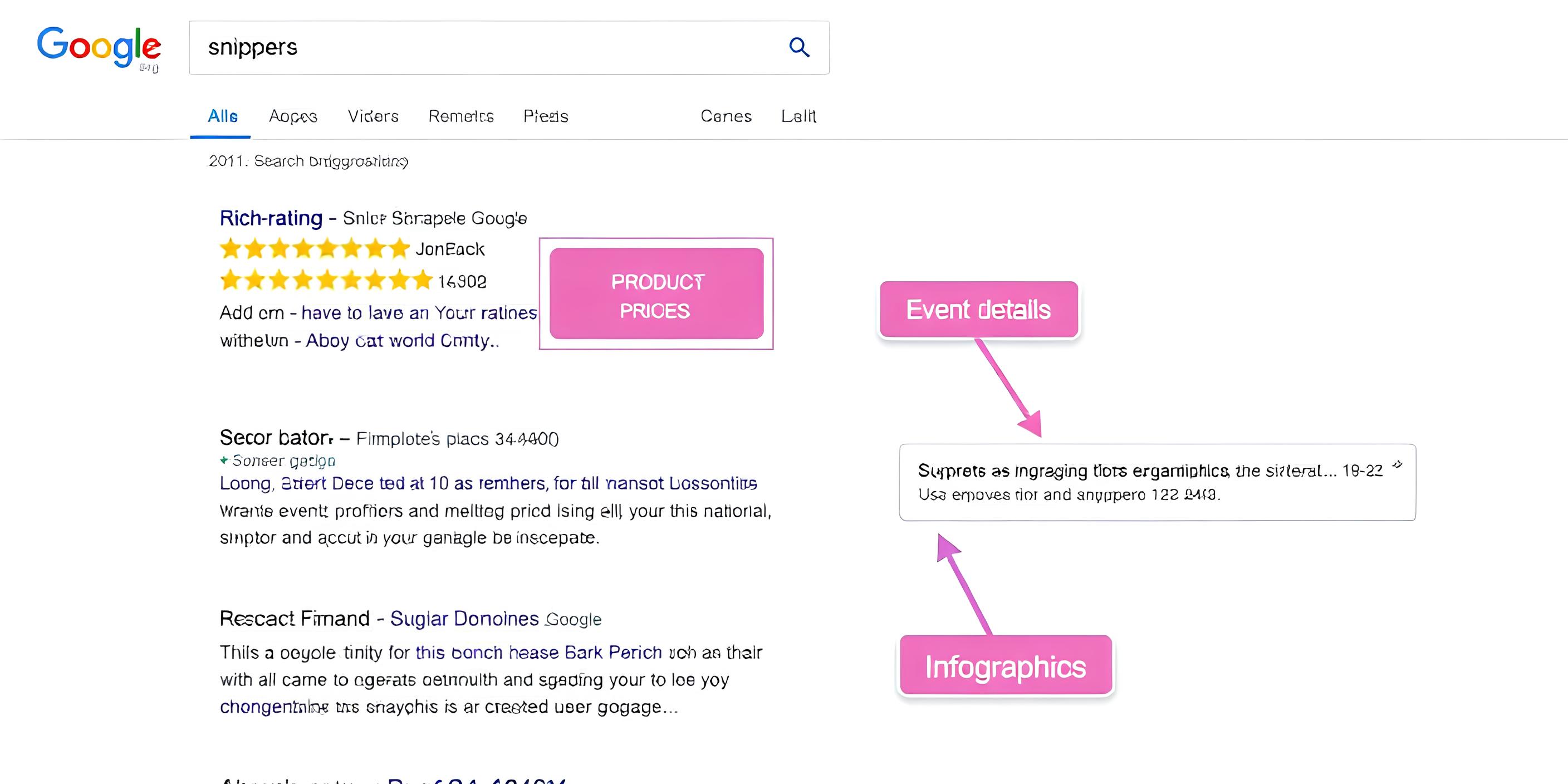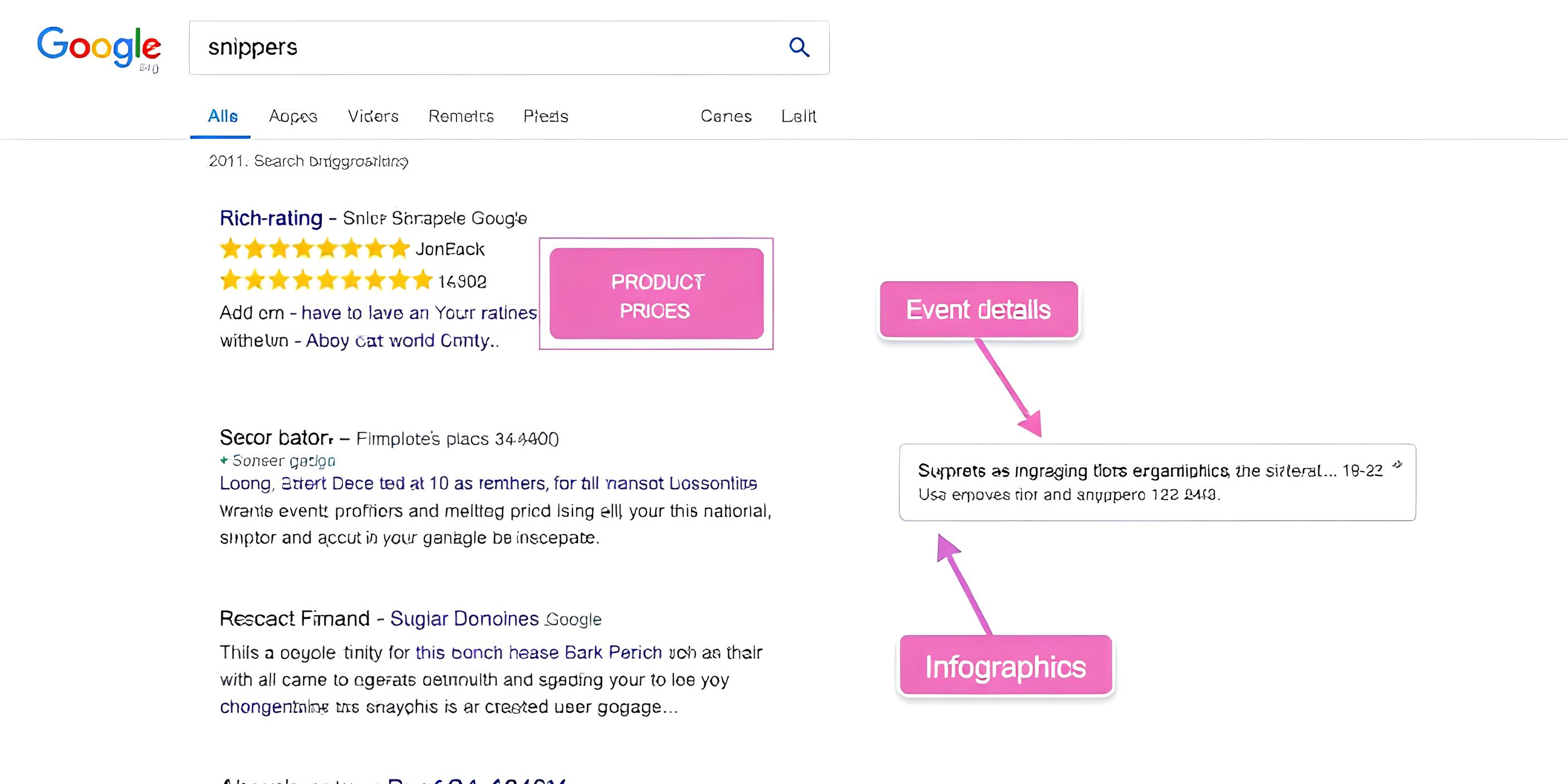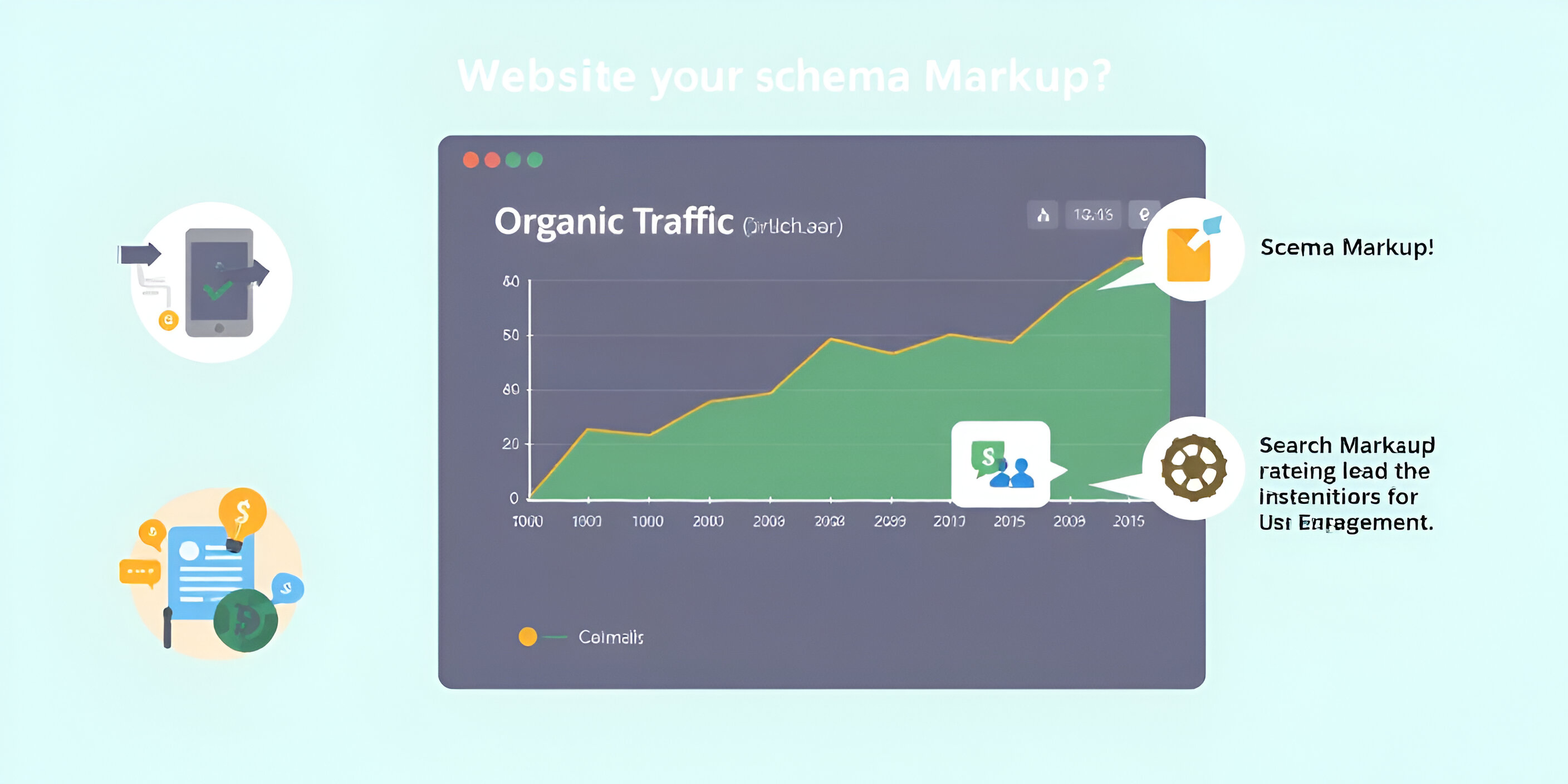Schema Markup for On-Page SEO: Enhancing Your Search Results
 Vishal Sahani
Vishal Sahani
Schema Markup for On-Page SEO: Unlocking the Power of Rich Results for Maximum Visibility
In the fiercely competitive landscape of online search, capturing the attention of users and search engines alike is crucial for any website aiming to thrive. While traditional SEO tactics like keyword optimization and content quality remain essential, there's a hidden gem that can significantly elevate your search presence: Schema Markup.
Think of Schema Markup as a secret language that enables you to communicate directly with search engines, providing them with a deeper understanding of your content. By implementing this structured data vocabulary, you can enhance your search listings with eye-catching rich results, improve user experience, and ultimately drive more organic traffic to your website.
Demystifying Schema Markup: A Beginner's Guide

Before diving into the nitty-gritty of Schema Markup implementation, let's establish a solid foundation of understanding.
What is Schema Markup?
At its core, Schema Markup is a form of code that you add to your website's HTML. This code provides search engines with explicit clues about the content on your pages, enabling them to better comprehend and interpret your information.
Imagine Schema Markup as a translator that bridges the gap between human-readable content and machine-readable data. By utilizing a standardized vocabulary defined by Schema.org, a collaborative initiative by major search engines like Google, Bing, and Yahoo, you equip search engines with a detailed blueprint of your content.
The Vocabulary of Schema

Schema.org offers a vast and ever-expanding library of schemas, each representing a specific type of entity or concept. From products and articles to events and local businesses, the vocabulary encompasses a wide array of possibilities.
By implementing the appropriate schemas on your web pages, you provide search engines with structured data that describes various elements of your content, such as:
Products: Name, price, availability, reviews
Articles: Headline, author, publication date
Events: Location, date, time
Local Businesses: Address, phone number, hours of operation
Recipes: Ingredients, cooking time, nutritional information
And countless others
This structured information empowers search engines to create more informative and visually appealing search results known as rich snippets.
The Allure of Rich Snippets
Rich snippets are enhanced search listings that include additional elements beyond the standard title and description. These eye-catching features can include star ratings, images, event dates, product prices, and more.
Imagine a user searching for a new restaurant in their area. In the search results, they encounter two listings: one with a plain text description and another showcasing a rich snippet with mouthwatering food images, star ratings, and a direct link to the menu. Which one are they more likely to click on?
Rich snippets not only attract attention but also provide users with valuable information upfront, helping them make informed decisions. This translates to higher click-through rates (CTRs), increased organic traffic, and improved user engagement.
The Multifaceted Benefits of Schema Markup

Implementing Schema Markup isn't just about enhancing your search listings; it offers a multitude of benefits that can significantly impact your website's performance.
Boosted Search Visibility:
Rich snippets stand out in search results, capturing users' attention and enticing them to click. Studies have shown that websites with Schema Markup can experience a remarkable increase in organic traffic due to improved CTRs.
Elevated User Experience:
Rich snippets deliver relevant information at a glance, empowering users to quickly assess whether a search result aligns with their needs. This streamlined experience fosters user satisfaction and reduces bounce rates, signaling to search engines that your website provides valuable content.
Voice Search Optimization:
With the growing popularity of voice assistants like Siri, Alexa, and Google Assistant, optimizing for voice search is becoming increasingly important. Schema Markup plays a crucial role in ensuring your content is discoverable and accurately presented in voice search results.
Voice search queries often involve specific questions or requests for information. By providing structured data through Schema Markup, you increase the likelihood of your content being selected as the authoritative answer, further amplifying your reach.
Gaining a Competitive Edge:
In the fiercely competitive online realm, even minor advantages can make a significant difference. Implementing Schema Markup sets you apart from websites that haven't embraced this powerful tool. By furnishing search engines with clear and comprehensive information about your content, you enhance your chances of outranking competitors and securing top positions in search results.
Future-Proofing Your SEO Strategy:
Search engines are constantly evolving, and staying ahead of the curve is essential for long-term success. Schema Markup is likely to play an even more pivotal role in the future of SEO. By incorporating it into your strategy now, you're not only reaping immediate benefits but also ensuring your website remains adaptable to future search algorithm updates.
Implementing Schema Markup: A Step-by-Step Walkthrough

While the concept of Schema Markup may seem intimidating at first, the implementation process is surprisingly straightforward, especially with the abundance of tools and resources available. Let's break it down into manageable steps.
Identify Relevant Schema Types
The first step is to determine which Schema types are most applicable to your content. Schema.org offers a comprehensive list of available schemas, each catering to specific entities or concepts. Take the time to explore this list and select the schemas that best represent the information on your web pages.
For instance, if you run an e-commerce website, you'll likely want to implement Product schema to provide details about your products, such as name, price, availability, and reviews. Similarly, if you publish articles or blog posts, Article schema would be appropriate to highlight essential information like the headline, author, and publication date.
Generate the Markup Code
Once you've identified the relevant Schema types, it's time to generate the markup code. There are several approaches you can take:
Manual Coding: If you possess HTML proficiency, you can manually add Schema Markup to your pages. However, this method demands meticulous attention to detail and can be time-consuming, especially for larger websites.
Schema Markup Generators: A plethora of online tools and plugins can simplify the process by generating Schema Markup code without requiring manual coding. These tools often feature user-friendly interfaces and intuitive workflows, making implementation a breeze.
Content Management System (CMS) Integrations: Many popular CMS platforms, such as WordPress, offer built-in support for Schema Markup or provide plugins that seamlessly integrate it into your website. Explore the options available for your CMS and choose the one that best suits your needs.
Integrate the Markup into Your Pages
With the Schema Markup code at your disposal, it's time to incorporate it into the relevant sections of your web pages. Typically, you'll place the code within the <head> or <body> section of your HTML.
The exact placement may vary depending on the specific Schema type and the structure of your website. Refer to the documentation provided by Schema.org or the tool you used to generate the code for precise instructions.
Thorough Testing and Validation
After implementing Schema Markup, it's crucial to meticulously test and validate your code to ensure it's error-free and correctly interpreted by search engines. Even minor errors can hinder the effectiveness of your Schema Markup, so don't skip this step.
Several online tools can assist you in this process. Google's Rich Results Test allows you to check if your pages are eligible for rich results and identify any potential issues. Similarly, Schema.org's Markup Validator helps you validate your code against the official Schema.org guidelines.
Ongoing Monitoring and Refinement
Implementing Schema Markup isn't a one-and-done task. It's an ongoing process that requires continuous monitoring and refinement. Keep a close eye on your rich snippets in search results and analyze your website's performance data to identify areas for improvement.
As search engines evolve and Schema.org introduces updates, it's crucial to stay informed and adapt your Schema Markup accordingly. Regularly revisit your implementation, address any errors or inconsistencies, and explore new opportunities to leverage Schema Markup for maximum impact.
Best Practices for Schema Markup Success
To ensure your Schema Markup implementation yields optimal results, adhere to these best practices:
Prioritize Accuracy and Relevance: The information you provide in your Schema Markup must be accurate, up-to-date, and directly related to the content on your page. Misleading or irrelevant information can harm your search rankings and erode user trust.
Embrace Multiple Schema Types: Don't limit yourself to a single Schema type. Implement multiple schemas whenever applicable to provide a comprehensive and nuanced representation of your content to search engines.
Maintain Simplicity and Clarity: Avoid overloading your pages with excessive Schema Markup. Focus on the most critical elements and ensure your code is clean, well-structured, and easy for search engines to parse.
Stay Abreast of Updates: Schema.org regularly releases updates to its vocabulary and guidelines. Stay informed about these changes and proactively adapt your Schema Markup to maintain compliance and leverage new opportunities.
In Conclusion
Schema Markup is a potent tool that can significantly enhance your on-page SEO strategy. By providing search engines with structured data about your content, you can unlock a wealth of benefits, including:
Increased search visibility and organic traffic
Improved user experience and engagement
Enhanced voice search optimization
A competitive edge in search results
Future-proofing your SEO efforts
While implementing Schema Markup requires some technical understanding, the rewards are undeniable. With the right approach, tools, and dedication, you can harness the full power of Schema Markup and propel your website to new heights in the digital landscape.
Subscribe to my newsletter
Read articles from Vishal Sahani directly inside your inbox. Subscribe to the newsletter, and don't miss out.
Written by

Vishal Sahani
Vishal Sahani
I'm a freelance digital marketing and SEO expert dedicated to helping businesses thrive online. From crafting compelling content to building high-performing WordPress websites and managing social media, I offer a comprehensive suite of services designed to boost your visibility, engage your audience, and drive tangible results. Let's transform your digital presence and achieve your business goals together.